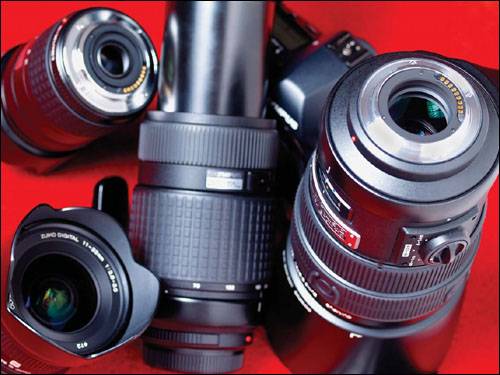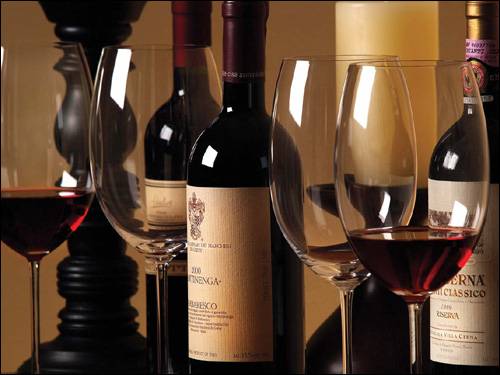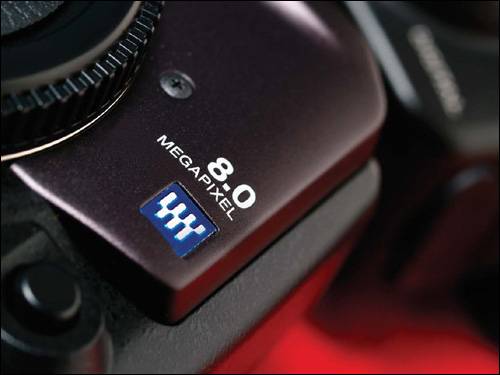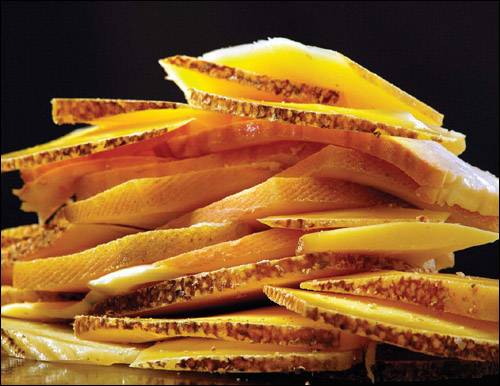| A professional digital camera is a major purchase, and your ability to use it effectively will be one of the most important factors in your success as a food photographer. Ask yourself the following questions before you purchase a camera. The answers will help you identify the camera and features that are best for you. Tip Although a camera may cost a few dollars more at a retail store, a trustworthy dealer is worth his weight in gold. You'll get advice and service for years down the road. Sure, you can get good deals purchasing a camera by mail order or over the Internet, but there is no substitute for the experience of holding a camera in your hands and getting a good feel for its controls and settings.
What is my price range? Digital camera prices vary depending on their features and capabilities. Professional cameras start around $1,000 and run up to the high $30,000s. Good cameras for the digital enthusiast range in price from $1,000 to $6,000. Knowing your price range will help you narrow the field and decide which features you need most. Of course, the price you can afford greatly depends on how often you use the camera. If you use it daily for professional work, the return on your investment will be quick. Tip Bear in mind that when you shoot digitally, you will no longer have to pay for film and processing. That means you can invest more money in the camera and accessories!
How much camera do I really need? Whether you need some specific featuressuch as close-focusing, an extra-large LCD viewfinder, or zoom lensesdepends on whether you will be using your camera only for studio work, or also for location shoots such as press conferences and cooking competitions. Unfortunately, people often buy much more powerful cameras than they really need, thinking they might use the extra features somewhere down the road. The fact is, however, that these cameras are loaded with bells and whistles that will rarely if ever be used. A much better approach is to buy a camera that is just good enough for what you need today. Digital technology is advancing so quickly, with prices dropping just as fast, that by the time you've gained some experience and decide you're ready for more advanced features, you may be in the market for a better camerapossibly at a lower price than you paid for your first one! Tip One of the most important considerations when deciding whether to buy a particular camera is whether it is comfortable to hold and intuitive to use. You really have to feel as if you want to use it every day. As a food photographer, you are an artist, and your camera is an extension of your eyes and hands. Test a camera thoroughly before purchasing it to make sure the controls and menus are easy to use for your style of shooting.
Do I need a new set of lenses? Do I need a zoom lens? Whenever you evaluate a camera, be sure to consider what lenses are available. Be aware, too, of the f-stops and the focusing range of the lens. Most digital SLR cameras come with a standard 2880mm zoom lens. A standard complement of lenses includes a wide-angle lens, a normal lens, and a telephoto lens. You will also need a polarizing filter, which helps to reduce reflections and enhance certain colors in natural light. If you already own many lenses from a particular camera manufacturer, start with one of that manufacturer's digital cameras. Tip Digital lenses are better for use on digital cameras, because they control the path of the image and direct it straight into the camera sensor for better image resolution. I learned this when I started using Olympus digital cameras, which feature wonderful digital Zuiko lenses.
Tip It is critical to keep your lenses clean with a soft lens cloth. Be especially careful when cleaning your lenses in the kitchen or studiofood or other substances on the cloth can scratch your lens! It's also a great idea to purchase a clear protective filter for the front of your lens. It can be replaced easily and inexpensively if scratched, and you won't damage the front lens element.
 What accessories do I need? In addition to the lenses mentioned in the preceding bullet, your basic kit should also include a tripod, batteries, portable flashes with external battery packs, and digital storage media. Do I need a macro feature to take photographs of objects at very close range? For serious food photography, you will definitely need a macro lens or a camera with the ability to focus at very close distances. Fixed and zoom lenses vary in these capabilities, or there may be a special macro lens attachment for your camera. What are my power requirements? Will you always use batteries, or do you expect to work near a power outlet? Because many digital cameras have proprietary batteries that work only with that specific camera, it is important to purchase at least one extra battery and an external charger. It is easy to forget to charge your batteries, but if you do not have power, you won't get the shot! For this reason, I always carry several extra batteries and make sure they are fully charged. Tip If you plan to shoot overseas, be aware of what type of power will be available so that you can charge your batteries while you're abroad. Many travel stores sell power converters that work very well.
Tip Batteries represent about one-third of a camera's weight, so be sure to compare different models with the batteries loaded. Often, batteries are not installed in the retailer's display units, and the difference can be surprising!
 Where will I be taking my pictureson location or in a studio? Will I have control over the light? As a food photographer, you may encounter many situations where you will not be allowed to use a flash. For this reason, you should consider purchasing a digital camera designed for shooting in low-light situations. These cameras typically have ISO settings of 1006400, and sometimes higher, which enables you to get a shot with no flash. Keep in mind, however, that if you shoot at these higher ISOs, your images will be grainier and of lesser quality. Do I need an external flash? An external flash is essential to good food photography. That's because built-in camera flashes flatten the subject, causing it to appear to have less depth and shape. These built-in flashes just don't have enough power, so the light they provide falls off drastically and fails to properly illuminate objects in the background. Direct flash creates awful shadows and doesn't bring out the texture or color of food. See Chapter 7, "The Recipe for Light," for more information. Tip Although many digital cameras have a built-in flash, you should not use it for your food photography! Make sure you shut the camera's flash off. Sometimes, after you have shut the camera off and turned it back on again, it will default back to the built-in flash, so be sure to recheck the setting.
 In what weather conditions will I be shooting? Do you need a waterproof camera? Will you be taking pictures in high-heat conditions or in below-freezing temperatures? Some digital cameras are designed for extreme weather conditions. For example, you can use waterproof digital cameras on a boat or in the rain without worry. As an on-location food photographer, you might have to shoot outdoors in the winter, inside a walk-in freezer, or near the open flame of a stove or barbeque. For this reason, you should be aware of what the camera's body is made of. You certainly don't want to scorch or mar the finishnot to mention damage its lens or sensitive electronicsby exposing it to extreme cold or high heat. Tip For serious photography, consider cameras with metal bodies, such as aluminum, steel, magnesium alloy, or titanium. They are more rugged and sturdier than plastic.
What am I going to do with my photographs? Do you plan to make your own prints? If so, how big do you need them to be? Bigger prints require a higher-megapixel camera for the best reproduction quality. On the other hand, if you will primarily be posting your pictures on a Web site or sending them to newspapers, lower-resolution images are just fine. Tip Digital cameras are classified by the megapixel count in the sensor. For food photography, you should have at least a 5-megapixel camera. If you are going to need gallery-quality 11x14-inch prints, or if your pictures will be used in large in-store displays or billboards, you should purchase a digital camera with at least 8 megapixels.
 |



